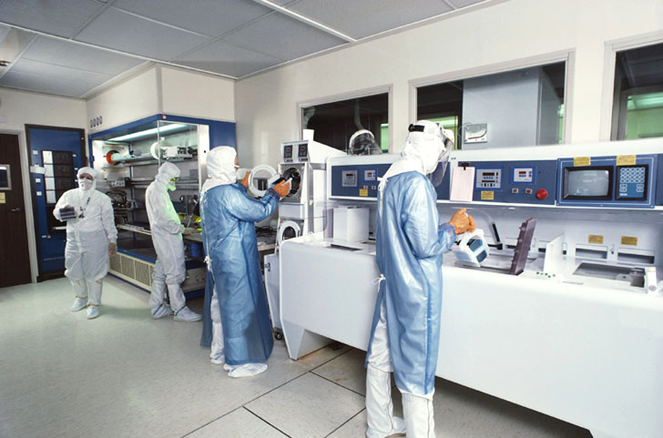Material Engineer
Material Scientist (also studied chemical engineering)
Studies about the properties of a variety of materials such as polymers, ceramics, glasses, composites, semiconductors, and metals/alloys, and how to make them.
- Processes semiconductor materials (Si, GaAs, InP, etc.) in a semiconductor lab (also called a clean room)
- Uses additive manufacturing technology to build layers upon layers of patterned material into a functional electronic device.
- involves the use of many deposition and patterning equipment whose functionalities are based on a variety of solid-state, liquid and gaseous chemical reactions
a good understanding of chemistry/chemical engineering and materials science is very beneficial.
She often works in the semiconductor lab
She needs to wear a bunny suit (or personal protective equipment) from head to toe
Each discipline has different properties
Materials Process Engineers enjoy figuring out how to make a product from scratch, experimenting in the lab, characterizing the products to see if the products turned out well, improving the products and their processes, and controlling and monitoring the manufacturing processes to satisfy customers' needs. They also engage in team work with device designers and application engineers to see how their products perform.
Each material has widely different electrical, mechanical, chemical, and optical properties, so you can pick and choose which area interests you the most to focus on

She works with:
- Micro lenses: used in cellphones, cameras, and computers
- Prints thousands of micro lenses on wafers, which are made of pure silicon
- Wafers are used as semiconductors in different electronics
Additional Responsibilities
- She characterizes the lenses with various optical tools for the radius of curvature, shape error, lens focusing power, and more.
- Markets the products, engages in discussion with existing and potential customers about whether their desired products can be made to specification, cost, and delivery schedule
- Lenses are then observed and captured with a scanning electron microscope
- Discusses with both regular and potential candidates to create different lenses
Interested in Material Engineering?
Here is some more information!
This is a quick video covering the basics of material science/engineering.
This video goes into more detail about material engineering and the many ways it is integrated into today's society



